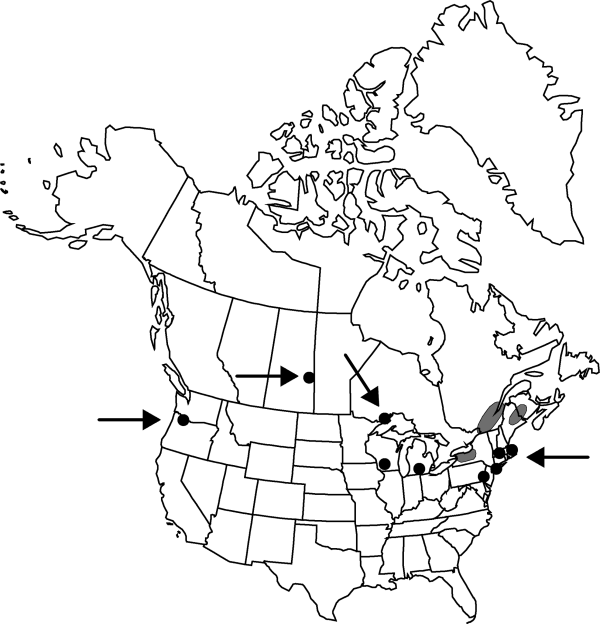Chenopodium polyspermum
Sp. Pl. 1: 220. 1753.
Stems erect or decumbent, branched, 1.5–5(–10) dm, glabrous. Leaves nonaromatic; petiole to 1.7 cm; blade ovate to elliptic or oblong, 1.5–4(–8) × 0.4–2.5 cm, base rounded to cuneate, apex obtuse to rounded or acute, glabrous. Inflorescences lateral cymes, sometimes terminal and axillary spikelike panicles; bracts absent or leaflike and gradually reduced in size distally. Flowers: perianth segments 5, distinct nearly to base, lobes elliptic to oblong, 0.7–1 × 0.5–0.8 mm, apex obtuse or rounded, not keeled, glabrous, not covering fruit at maturity; stamen 1; stigmas 2, 0.1 mm. Utricles depressed-ovoid; pericarp nonadherent, smooth. Seeds 0.8–1.3 mm diam.; seed coat brown-black, dull. 2n = 18.
Distribution

N.B., Ont., Que., Sask., Maine, Mass., Mich., N.J., N.Y., Oreg., Pa., Wis., Europe, n Asia.
Discussion
Varieties 2 (2 in the flora).
Selected References
None.
Key
| 1 | Plants spreading to suberect; inflorescences lax, cymose, axillary; leaf blade apices usually obtuse, green or yellowish green. | Chenopodium polyspermum var. polyspermum |
| 1 | Plants upright; inflorescences condensed, spiciform, terminal and axillary; leaf blade apices usually acute, becoming red at maturity | Chenopodium polyspermum var. acutifolium |